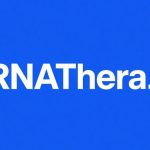
I. RNA Therapeutics: From Vaccines to Precision Medicine
mRNA Vaccines & Self-Amplifying RNA (saRNA)
- Infectious Disease Vaccines: By 2025, multiple mRNA and saRNA vaccines are approved globally. Moderna and BioNTech’s personalized cancer vaccines (e.g., BNT122) reach Phase III trials, targeting tumor neoantigens to activate T-cell immunity.
- Technical Enhancements: Pseudouridine (Ψ) and 5′ cap modifications (e.g., ARCA) reduce immunogenicity and extend protein expression. saRNA leverages viral replicons for prolonged expression (e.g., influenza vaccines).
CRISPR-RNA Synergy
- RNA-Encoded Nucleases: mRNA-delivered CRISPR-Cas9 or base editors (CBE/ABE) enable transient gene correction (e.g., cystic fibrosis, sickle cell anemia) without DNA integration risks.
- RNA Editing: Wave Life Sciences’ WVE-006 becomes the first clinical-stage RNA editing therapy, using ADAR enzymes for precise base replacement in alpha-1 antitrypsin deficiency.
RNA Interference (RNAi) Expansion
- Drug Development: Approved RNAi therapies (e.g., Alnylam’s Patisiran) expand into oncology (targeting VEGF in liver cancer) and metabolic diseases.
- Delivery Innovations: Lipid nanoparticles (LNPs) and GalNAc conjugation enhance liver targeting, while cell-penetrating peptides (CPPs) extend delivery to the CNS.
II. RNA Analytics: Powering Precision Medicine
Single-Cell & Spatial Transcriptomics
- Dynamic Insights: Velocyto and scVelo algorithms predict cell differentiation trajectories (e.g., hematopoietic stem cells → immune cells) via unspliced/spliced mRNA ratios.
- Spatial Mapping: 10x Genomics’ Visium integrates NGS to resolve RNA gradients in tumor microenvironments, guiding combination immunotherapy.
Next-Generation Sequencing (NGS)
- Market Growth: The global RNA-NGS market surges, driven by cancer mutational profiling and genetic disorder screening.
- Liquid Biopsy: ctRNA detection (e.g., EGFR T790M) becomes a gold standard for monitoring lung cancer resistance, outperforming ctDNA in sensitivity.
AI-Driven RNA Design
- Modification Optimization: DeepMind’s AlphaFold-RNA predicts stability impacts of modified nucleotides (e.g., phosphorothioate bonds), accelerating therapeutic RNA design.
- Automated Production: AI platforms (e.g., GenXPro, CD Genomics) streamline sequence-to-GMP workflows, cutting costs by 40%.
III. Breakthroughs in Disease Treatment
Oncology
- Personalized Vaccines: BioNTech’s BNT122 with PD-1 inhibitors reduces melanoma recurrence by 52%; Moderna’s KRAS G12D mRNA vaccine enters Phase II.
- Non-Coding RNA Targeting: miRNA-21 inhibitors (e.g., MRG-110) promote angiogenesis via MAPK/HIF-1 pathways for ischemic heart disease.
Genetic & Rare Diseases
- mRNA Replacement: Translate Bio’s CFTR-mRNA inhalers improve lung function in cystic fibrosis (12% FEV1 increase in Phase III).
- Exon Skipping: Sarepta’s SRP-5051 restores dystrophin expression in Duchenne muscular dystrophy, now approved for children under 1.
Regenerative Medicine & Chronic Diseases
- Bone Repair: miR-26a-loaded hydrogels accelerate bone defect healing by 30% via Wnt/β-catenin pathways.
- Metabolic Disorders: Alnylam’s ANGPTL3 siRNA (Zilebesiran) lowers blood pressure for 6 months post-injection, outperforming ACE inhibitors.
IV. Market Dynamics & Regional Competition
Regional Leadership
- North America: Illumina and Thermo Fisher dominate 65% of RNA sequencing hardware. FDA’s RTOR pathway accelerates therapy approvals.
- Asia-Pacific Rise: China’s Xiaomo Biotech and Japan’s DNA Chip Research Institute focus on RNA-based antiviral crops and cancer screening via public-private partnerships.
Industry Investments
- CDMO Expansion: Samsung Biologics and WuXi Biologics build RNA-dedicated facilities for small-batch GMP production.
- M&A Activity: Pfizer acquires Acobiom for $1.2B to bolster oncology RNA pipelines; Maravai-TriLink develops heat-stable saRNA for African regions lacking cold chains.
V. Challenges & Future Directions
Technical Hurdles
- Delivery Systems: LNPs show <1% blood-brain barrier penetration; exosome carriers (e.g., Codiak Bio) face scalability issues.
- Immunogenicity: Circular RNA (circRNA) evades TLR detection but requires longer half-life (>72 hours).
Clinical Translation
- Durability: mRNA-encoded CRISPR-Cas9 lasts 5-7 days; saRNA extends this to 28 days but risks anti-vector immunity.
- Regulatory Harmonization: EMA-FDA guidelines address RNA therapy interchangeability, yet global standards remain fragmented.
Emerging Frontiers
- Synthetic Biology: GenScript’s orthogonal tRNA systems enable non-natural amino acid insertion in cell factories.
- Environmental Applications: RNAi sprays (e.g., anti-mosquito dsRNA) cut dengue transmission by 40% in Brazil trials, but ecological safety concerns persist.
Conclusion
In 2025, gene and RNA technologies transition from labs to real-world applications. mRNA vaccines, CRISPR-RNA editing, and single-cell analytics form the core pillars, while delivery innovations and AI-driven design overcome critical bottlenecks. With advancements in circular RNA, orthogonal systems, and eco-friendly applications, RNA technologies are poised to redefine infectious disease control, precision oncology, and sustainable agriculture in the coming decade.




